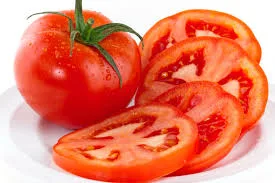Cucumbers belong to the same plant family as squash, pumpkin, and watermelon (the Cucurbitaceae family). Like watermelon, cucumbers are made up of mostly (95 percent) water, which means eating them on a hot day can help you stay hydrated. However, there's reason to eat cucumbers all year long. With vitamin K, B vitamins, copper, potassium, vitamin C, and manganese, cucumbers can help you to avoid nutrient deficiencies that are widespread among those eating typical diet.
Cucumbers contain an anti-inflammatory flavonol called fisetin that appears to play an important role in brain health. In addition to improving your memory and protecting your nerve cells from age-related decline, fisetin has been found to prevent progressive memory and learning impairments in mice with Alzheimer's disease. Cucumbers contain polyphenols called lignans (pinoresinol, lariciresinol, and secoisolariciresinol), which may help to lower your risk of breast, uterine, ovarian, and prostate cancers.
Cucumbers may help to "cool" the inflammatory response in your body. And animal studies suggest that cucumber extract helps reduce unwanted inflammation, in part by inhibiting the activity of pro-inflammatory enzymes (including cyclo-oxygenase 2, or COX-2). Cucumbers contain numerous antioxidants, including the well-known vitamin C and beta-carotene. They also contain antioxidant flavonoids, such as quercetin, apigenin, luteolin, and kaempferol, which provide additional benefits.
Placing a cucumber slice on the roof of your mouth may help to rid your mouth of odor-causing bacteria. According to the principles of Ayurveda, eating cucumbers may also help to release excess heat in your stomach, which is said to be a primary cause of bad breath. Cucumbers contain multiple B vitamins, including vitamin B1, vitamin B5, and vitamin B7 (biotin). B vitamins are known to help ease feelings of anxiety and buffer some of the damaging effects of stress.
Cucumbers are rich in two of the most basic elements needed for healthy digestion: water and fiber. If you struggle with acid reflux, you should know that drinking water can help suppress acute symptoms of acid reflux by temporarily raising stomach pH; it's possible that water-rich cucumbers may have a similar effect. Cucumber skins contain insoluble fiber, which helps add bulk to your stool. This helps food to move through your digestive tract more quickly for healthy elimination.
Cucumbers are very low in calories, yet they make a filling snack (one cup of sliced cucumber contains just 16 calories). The soluble fiber in cucumbers dissolves into a gel-like texture in your gut, helping to slow down your digestion. This helps you to feel full longer and is one reason why fiber-rich foods may help with weight control.
Cucumbers contain potassium, which is associated with lower blood pressure levels. A proper balance of potassium both inside and outside your cells is crucial for your body to function properly. As an electrolyte, potassium is a positive charged ion that must maintain a certain concentration (about 30 times higher inside than outside your cells) in order to carry out its functions, which includes interacting with sodium to help control nerve impulse transmission, muscle contraction, and heart function.
There are many ways to enjoy cucumbers, such as fermented or raw in vinegar-based salads. If you're looking for something different, cucumbers make an ideal base for your vegetable juice due to their mild flavor and high water content. In fact, a simple juice of cucumber and celery is ideal for those new to juicing. From there you can work your way up to red leaf lettuce, romaine lettuce, spinach, and escarole, along with parsley and cilantro. Juicing is actually an ideal way to consume cucumbers.
When you drink fresh-made green juice, it is almost
like receiving an intravenous infusion of vitamins, minerals, and enzymes
because they go straight into your system without having to be broken down.
When your body has an abundance of the nutrients it needs, and your pH is
optimally balanced, you will feel energized and your immune system will get a
boost.
If you're wondering whether you should choose organic cucumbers over
conventionally grown varieties, It is suggested that you choose organic.
Cucumbers were ranked the 12th most contaminated food and the second in cancer
risk due to their pesticide
content, according to the Environmental Working Group (EWG). Further,
cucumbers are often waxed after harvest to withstand the long journey to market
unscarred and to protect against the many hands that touch them. Therefore, it
is better to chose organic Cucumbers than these other varieties.

























